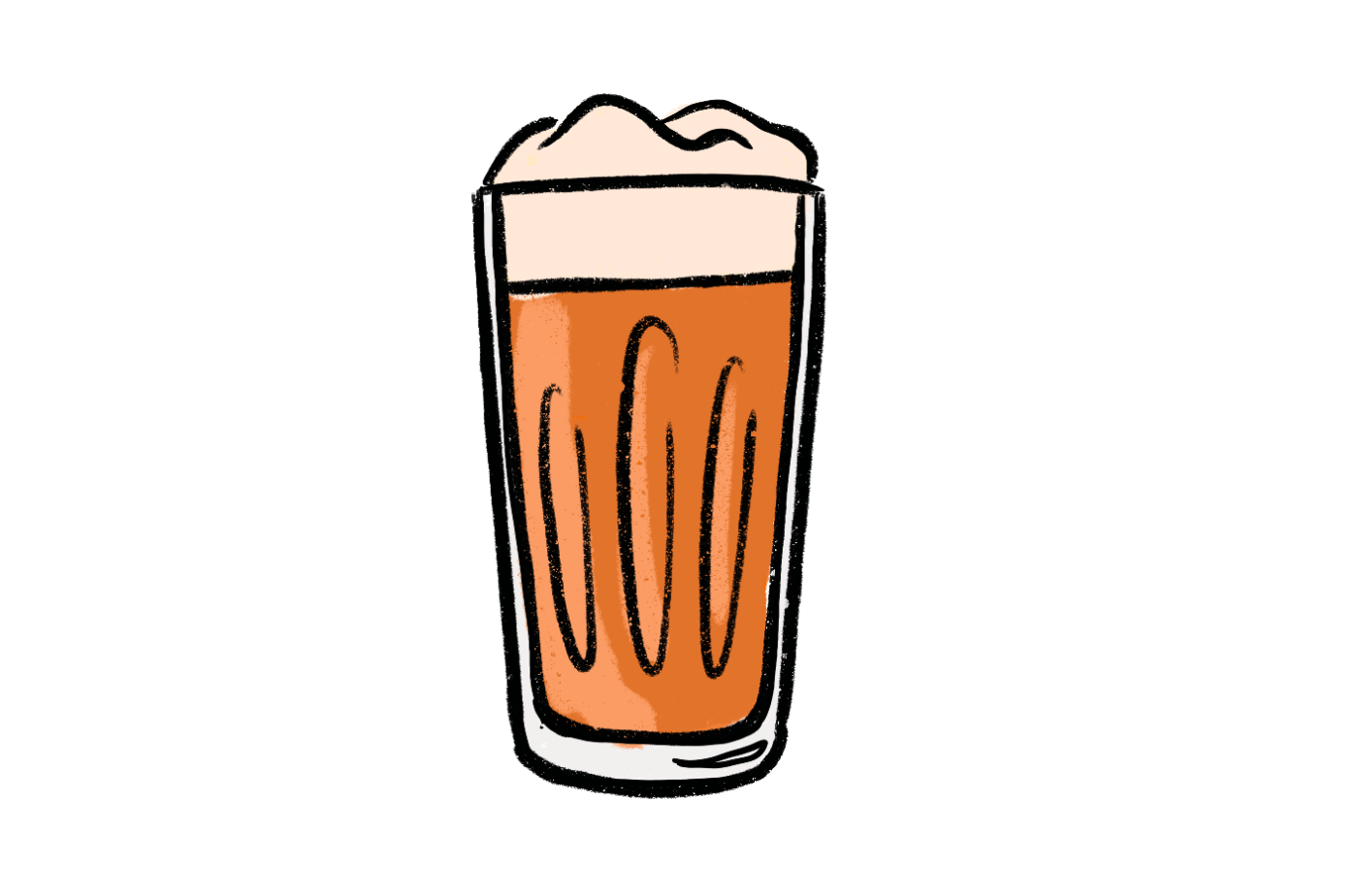

Any ale that isn't dark - right?
So, what is it?--red
Simply put, a Pale Ale is any ale that isn't dark. Just like that! The term 'Pale Ale' dates back to the early 18th century, when English brewers started tinkering with styles paler than the classic darker English ales. The colour part is no joke, as darker beers are typically bigger, richer things with more toasty caramel notes (from more heavily toasted grains) than a citrussy Pale Ale. Importantly, Pale Ale also has more hop bitterness, which sets it apart from traditional dark ales. Of all the beer styles, Pale Ale is also one of the easiest to make - it ferments quicker than a lager and makes fresh but charismatic beers that stand out. Little wonder that Pale Ale was one of the first styles embraced by modern craft brewers, particularly in the US, where hoppy, distinctly aromatic, and fruity Pale Ale from the West Coast made friends easily, particularly in a beer market full of flavourless lagers (hello Budweiser).

What does it taste like?--aromatic
When it comes to taste, Pale Ale is a beer of moderation - it strikes a balance with its moderate bitterness, hoppy notes, and moderate alcohol (usually 4-5.5% alcohol), making for a beer that's just right, just like Goldilock's porridge. The colour spectrum of Pale Ale ranges from brown/amber to pale straw yellow, with the more yellow/golden Pale Ale styles featuring less malt and a lighter body, allowing the hops to shine through with their characteristic aromas. Pale Ale can smell like pine, citrus and tropical fruits, then with flavours like bread, coffee, toast, grilled nuts and caramel in varying intensities based on the style.

Main styles it's known for?--cellar
English Pale Ale - also known as Extra Special Bitters (ESB), is an amber-coloured beer with slightly herbal hop characters (from the English hops) and pronounced bitterness. English Pale Ale has the most toasty malt character of all the Pale Ale styles.

American Pale Ale - the most popular Pale Ale style, the American Pale has pronounced piney aromatics thanks to fragrant US hops. It's a light amber to golden yellow coloured beer with a bitter finish and less toasty richness than an English Pale Ale.

Extra Pale Ale - or XPA, could fit into its own category. A loner, but increasingly cool because it's a Pale Ale with a bit more in it. Sometimes that is hops, sometimes it's alcohol, sometimes it's just more flavour. XPAs also use pale malt, so they're lighter in colour (but usually more alcoholic).

Belgian Pale Ale - the most approachable of this quartet, Belgian Pale Ales have the least bitterness and are more sessionable beers. Imagine the English Pale Ale, but it's much more sessionable. Less aromatic, but with some different characters derived from the Belgian yeast, including cloves and even bubblegum.
How is Pale Ale made?--cork
Pale Ale is what's known as a 'top-fermenting' beer, which means the yeasts do their work floating on the top of the tank. Pale Ales are typically made with the Saccharomyces cerevisiae yeast (also used in wine), and the ferment is kept warmer to keep the yeast happy. We're still using the classic four beer water, barley, yeast and hops, but, as we touched on above, Pale Ale is made with 'paler' malted barley grains than some darker beer styles and plenty of hops (for fragrance and bitterness). Pale Ales are quick to make compared to lagers (perhaps 2 weeks vs up to 6 weeks for lager). However, they can have a more limited lifespan as the hoppy aromas can dim reasonably quickly (especially because beer doesn't contain preservatives).

What foods should you be pairing it with Pale Ale?--plum
Now, we're starting to sound like a broken record, but colour is crucial to your Pale Ale pairing. A lighter Belgian Pale Ale can pair with salads, seafood or creamy chicken pasta. At the same time, the bitter richness of an English ESB will be more than a match for meat pies, roast beef or even a cheeky Anzac biscuit (trust us, it's great). As your beer gets more hoppy, go with more robust flavoured food - burritos with a little chilli or Thai fish cakes with an ice cold hoppy American style Pale Ale is a real delight!
Recipes to pair with Pale Ale--pizza

One more thing about Pale Ale--earth
While it might seems strange, India Pale Ale (IPA) actually came before Pale Ale! Pale Ale was basically invented as a less strong version than an IPA, especially because most drinkers were looking for something a bit more sessionable than a 6-7% alcohol brew!
About the Author:
Andrew Graham is a master winemaker and viticulturist (aka a grape guy) who fell into the wine industry as a teenager and never looked back! Voted the 23rd most trusted wine critic on the planet, Andrew judges at wine shows across the globe and runs foolishly long ultramarathons in his spare time (swiftly followed by a recuperative glass of wine or a frosty beer).
Do you know your wine personality? If your answer is no, take our quiz to find out which wines to pick up next and build your box!
Build my box





